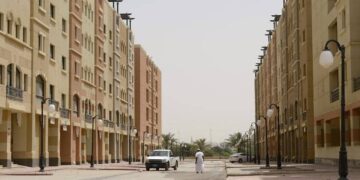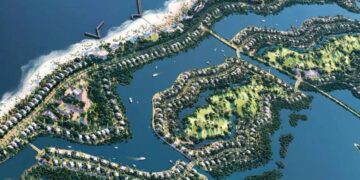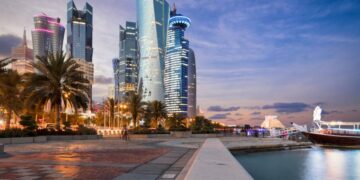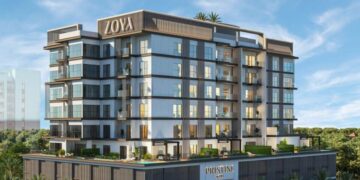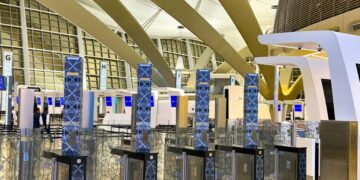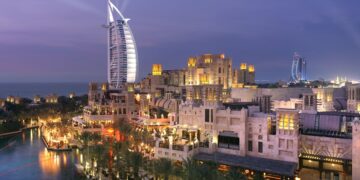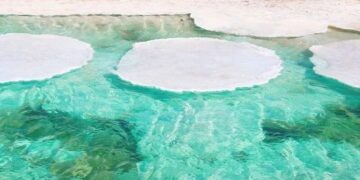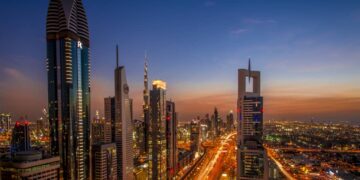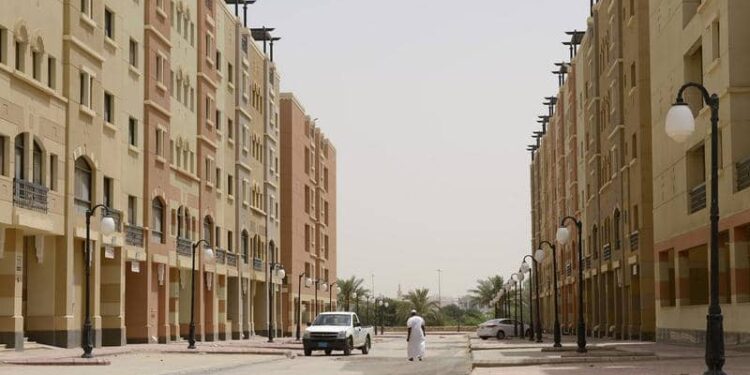Within the Shams Al Riyadh residential complex, renowned Saudi developer Dar Al Arkan has finished the nation’s first two-story 3D construction printed (3DCP) villa, which is 9.9 meters tall.
The villa’s structure is up to four times stronger than conventional construction because of the use of locally produced elements like cement, sand, rocks, and stones in varying concentrations.
Dar Al Arkan is currently constructing the second villa, which will generally take a month to finish, encouraged by its success. It reported that the first floor had already been completed in full and in just eight days.
Since it speeds up building while improving safety, lowering wastage, and eliminating errors, using 3CDP technology is a first for the area.
According to the developer, the villa was printed on-site during the height of summer without the use of any cooling systems or shades, demonstrating that the technology can print homes anywhere in the Kingdom at any time of year.
Dar Al Arkan noted that in order to ensure the project, including the first villa, was constructed safely and in conformity with Saudi Arabia’s building rules in every area, it had adhered to stringent protocols and an evidence-based approach.
It introduced the 3DCP technology in Q4 of the previous year to lead the shift of the building and real estate sectors toward cutting-edge and sustainable building practices and to support Saudi Vision 2030’s objectives for economic diversification and digitization.
In contrast to conventional home-building techniques, 3DCP is more versatile, uses fewer people to complete one house, and reduces construction time by more than half. According to the creator, this also helps to reduce Lost Time Injuries, leading to a safer workplace.
Additionally, according to Dar Al Arkan, the method is more sustainable and a workable option for a future low-carbon construction sector because less concrete is required to create a building.
When compared to traditional buildings, the combination of these benefits offers consumers lower prices and greater affordability, it continued.
The Saudi developer made the point that as 3DCP improves construction accuracy, fewer repairs and reworks will be necessary as well, helping to reduce long-term expenditures and raising the value of the property.
It went on to say that highly cost-effective project management will be possible compared to traditional construction because of a combination of decreased waste of construction materials, decreased need for repair or rework, and fewer on-site LTI events.
Wael Al Hagan, Project Manager, 3DCP, Dar Al Arkan, said: “We are currently building the second villa, which will typically take a month to complete, but we’ve already finished the first floor in only eight days. This 3D printed villa has additional insulation layers and features that ensure energy conservation, saving up to 30% in energy consumption.”
“We urge all industry experts to visit us and view the first completed villa and the second under construction for themselves,” noted Al Hagan.
“Our efforts are focused on developing the kingdom’s real estate sector by integrating the latest trends and technologies, drawn from global best practices to enhance our industry locally and deliver on the objectives of Vision 2030. The introduction of 3D construction printing enables us to focus on greater flexibility of design, strengthen productivity and achieve higher cost efficiency,” he added.
According to the Saudi developer, this technology will soon revolutionize the way consumers purchase homes because they will soon be able to choose from a variety of digital construction designs and easily authorize the printing of their homes with the press of a button.
In order to maintain the kingdom’s position as a leader in this field and to make Dar Al Arkan a highly competitive company in 3DCP technology, the statement continued.
